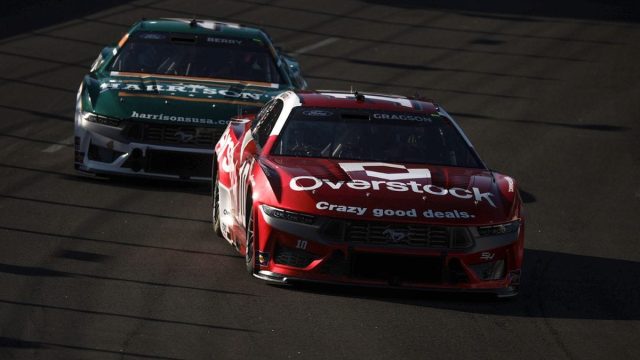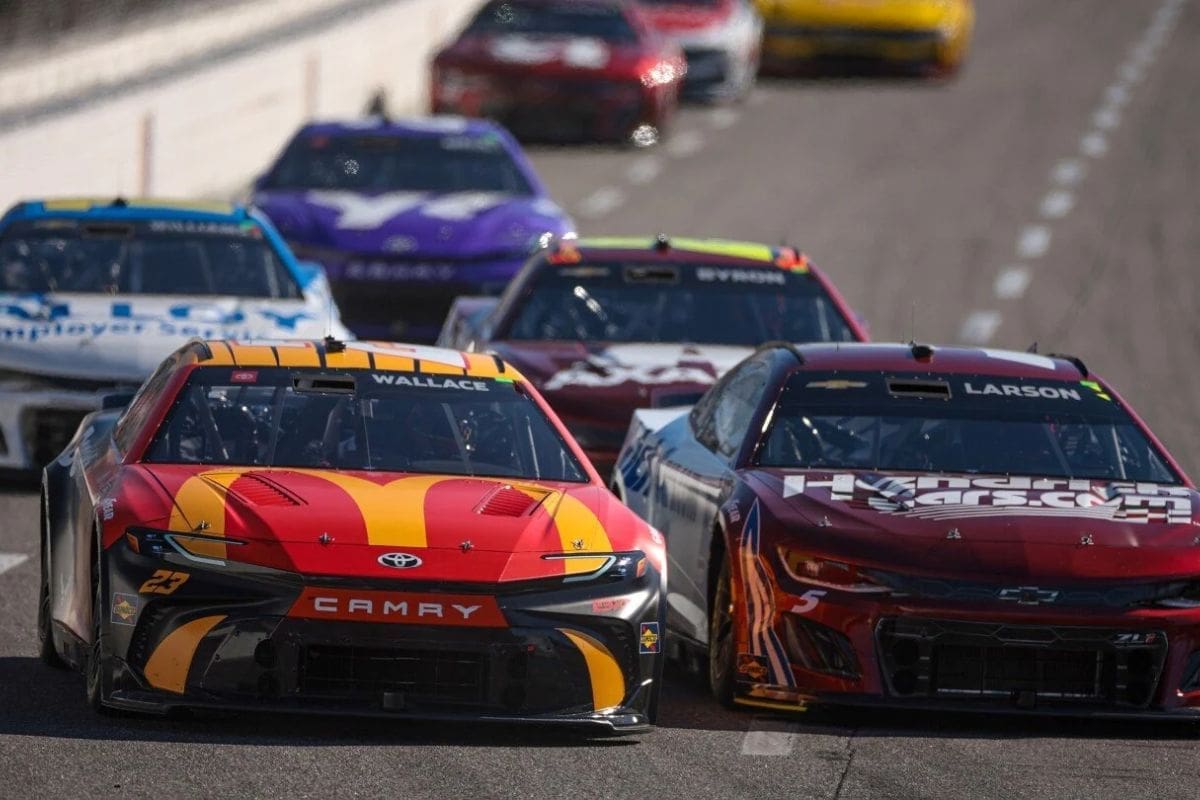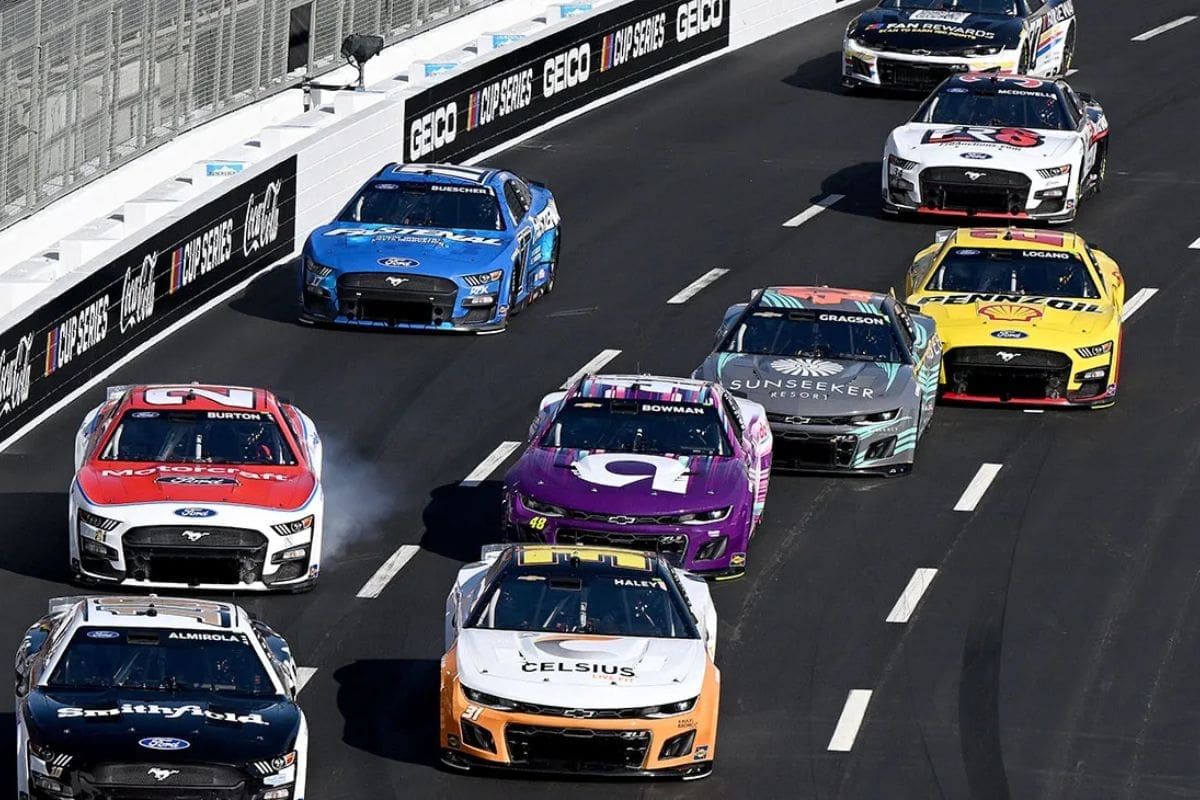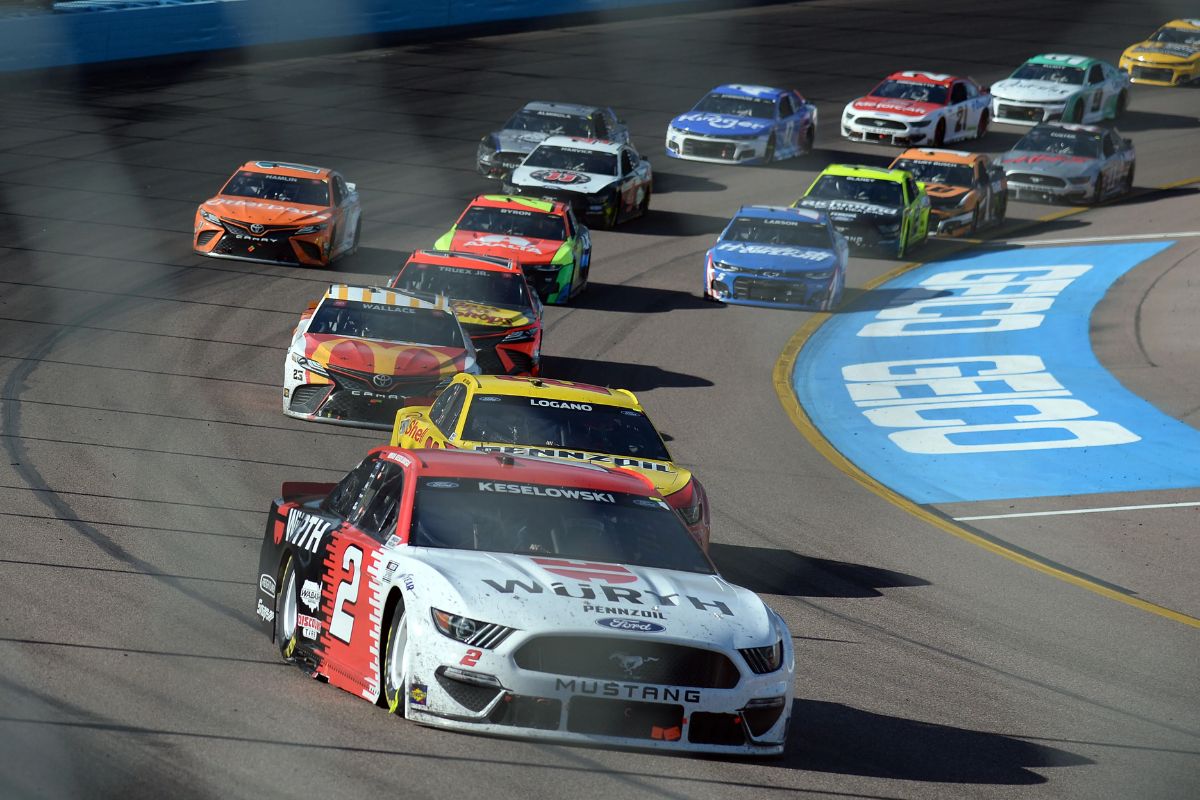SHR’s Shutdown Sparks Bidding War: The announcement of Stewart-Haas Racing‘s impending closure has created a considerable stir within the NASCAR community, as teams scramble to secure the valuable charters that will become available. Among the frontrunners in this bidding war are 23XI Racing and Trackhouse Racing, both of which recognize the tactical advantage these charters offer for the upcoming 2025 season. The implications of this competitive landscape extend beyond mere acquisitions; they may influence driver lineups and team dynamics as the sport navigates a transformative period. What tactics will these teams employ to secure their futures in this shifting environment?
Key Highlights
- Stewart-Haas Racing’s closure after 2024 creates a competitive bidding environment for its four available charters.
- 23XI Racing, led by Michael Jordan, is eyeing a charter for potential driver additions like Riley Herbst.
- Trackhouse Racing, with a roster of five drivers, faces uncertainty and may also pursue additional charters amid contractual challenges.
- The value of SHR’s charters is boosted by the team’s prestigious brand, intensifying competition among interested buyers.
- Charter negotiations will significantly impact NASCAR’s financial landscape, influencing team stability and future competition levels.
Stewart-Haas Racing Closure and Charter Availability
Why has Stewart-Haas Racing decided to close its doors after the 2024 season? The decision, articulated by co-owners Tony Stewart and Gene Haas, indicates a tactical shift in their racing operations, emphasizing the need to “pass the torch.
This closure marks the end of an era for a team that has been crucial in the NASCAR landscape, capturing multiple championships and contributing considerably to the sport’s growth.
With the impending shutdown, four charters previously held by Stewart-Haas Racing are now available for the 2025 season, creating a competitive landscape for teams and investors looking to expand their presence in NASCAR.
The newly formed Haas Factory team has secured one of these charters, which will be driven by Cole Custer, ensuring continuity within their operations.
However, the remaining charters present an opportunity for rival teams and new entrants to improve their competitiveness. The availability of these charters is expected to instigate a bidding war among interested parties, particularly given the prestige and resources associated with the Stewart-Haas brand.
Teams such as 23XI Racing and Trackhouse Racing are likely to capitalize on this opportunity, as acquiring a charter can provide a considerable competitive advantage regarding guaranteed entry into races and associated funding.
As the NASCAR community processes the implications of SHR’s closure, the focus now shifts to how this will reshape the competitive dynamics and potential for growth within the sport, especially with the upcoming charter negotiations.
Potential Buyers and Insider Insights
As the NASCAR community anticipates the fate of the three remaining charters formerly owned by Stewart-Haas Racing, speculation about potential buyers is intensifying. Recent discussions among insiders have highlighted two prominent figures: Michael Jordan of 23XI Racing and Justin Marks of Trackhouse Racing. Both teams have shown a strong commitment to the sport and a willingness to invest in their futures, making them formidable contenders in the charter acquisition landscape.
“With Daniel Suarez, they’ve got a lot of drivers under contract right now um, and not many seats, so you know they need some cards to fill some of those drivers.”
“With 23XI, they have a prior relationship with Monster obviously with Tyler Reddick. So I would assume that could be a landing spot for someone like a Riley Herbst.” – Albino
However, the sale of these charters is contingent on the resolution of ongoing negotiations regarding the charter agreement, which is set to expire after the 2024 season. This uncertainty is exacerbating tensions among teams, as they seek not only to secure their future with permanent charters but also to negotiate a more favorable revenue allocation from NASCAR.
The stakes are high, as the distribution of funds could greatly impact team operations and competitiveness. The impending decision on the charters will likely shape the landscape of NASCAR for years to come. Should Jordan or Marks secure further charters, they would strengthen their respective teams, potentially enhancing their performance and marketability.
Conversely, if the charters are acquired by other entities, it could signal shifts in team dynamics and competitive balance within the series. As all parties await the outcome of the charter discussions, the NASCAR community remains on edge, enthusiastic to see how this crucial moment will unfold and its implications for the sport’s future.
23XI Racing and Trackhouse Racing Potential Drivers
Amid the ongoing speculation surrounding the potential acquisition of charters by 23XI Racing and Trackhouse Racing, the focus now shifts to the drivers who could fill their rosters.
Both teams are positioned distinctly in the current landscape, with 23XI Racing potentially eyeing a secondary driver and Trackhouse Racing needing to manage its existing contracts effectively.
23XI Racing, co-owned by Michael Jordan, remains linked with Monster Energy, which sponsors Tyler Reddick in the Cup Series. This relationship opens the door for Riley Herbst, who currently competes in the Xfinity Series under the same sponsorship. Given Denny Hamlin‘s recent praise for Herbst’s performance at Indianapolis, the narrative is gaining momentum that he could shift to a Cup seat with 23XI, thereby solidifying the team’s competitive edge.
On the other hand, Trackhouse Racing, led by Justin Marks, is dealing with a surplus of contracted drivers, including Daniel Suarez. With limited available seats, the team faces the challenge of optimizing its lineup while balancing the need for fresh talent.
The tactical integration of new drivers could improve their performance, as they seek to build on their momentum in the NASCAR Cup Series.
Both teams must utilize their resources and relationships to secure drivers who can contribute to their long-term success, making the upcoming offseason crucial for shaping their competitive futures.
Trackhouse Racing’s Driver Situation and Potential Changes
The landscape of driver dynamics at Trackhouse Racing presents a compelling narrative of opportunity and strategy. Currently, the team boasts a diverse roster of five drivers, including Ross Chastain, Daniel Suárez, Zane Smith, Shane Van Gisbergen, and the rising star, Connor Zilisch.
As Zilisch prepares for his debut in the Xfinity Series with JR Motorsports in 2025, the question looms regarding his timeline for ascent to the Cup Series. This situation creates a potential pathway for Trackhouse to expand its operations, possibly acquiring supplementary charters to facilitate the elevation of its promising lower-league talent.
Suárez’s one-year contract introduces an element of uncertainty to the driver lineup. His performance will be scrutinized closely, and the possibility of a switch post-2025 could see a reshaping of the team.
Justin Marks faces critical decisions regarding whether to secure another charter or replace an existing driver, both of which could dramatically influence the team’s competitive edge.
Among the current drivers, Shane Van Gisbergen is emerging as a frontrunner for a Cup promotion, having already made a considerable impact in the Xfinity Series with multiple wins this season. His ongoing success positions him as a key figure in Trackhouse’s future strategy.
“Look at Shane Van Gisbergen, I mean he told me a month and a half ago or so, like you know he moved to America to go Cup racing next year. They’re hoping for a couple of wins. They’ve gotten more than that, they’ve gotten three, so you would think he’s going to be landing at one of the new Trackhouse Charter.” – Albino
As the team navigates this intricate landscape, the interplay between driver performance and organizational decisions will prove vital to maintaining its upward path in the competitive NASCAR environment.
Charter Negotiations and NASCAR’s Leadership Changes
How will the ongoing charter negotiations impact the future of NASCAR teams? The current discussions reflect a crucial crossroads for NASCAR, as teams seek a larger share of the profits to secure their viability amidst rising operational costs. Denny Hamlin has been vocal in advocating for increased financial support, arguing that the estimated $18 million annual cost per car necessitates a reevaluation of profit distribution, especially considering the league’s lucrative $7.7 billion media deal.
The outcome of these negotiations could have considerable ramifications for team stability and competition.
- Financial Viability: Increased funding from NASCAR could alleviate financial burdens on teams, fostering competitive parity and attracting new entrants to the sport.
- Media Engagement: The delay in settling these negotiations has already impacted media opportunities, as teams hesitate to participate in projects like the Netflix documentary series without guarantees of financial support.
- Leadership Dynamics: Ongoing changes in NASCAR’s leadership, including Steve Phelps’ expanded role and Ben Kennedy’s new position, may influence the negotiation process and tactical direction of the sport.
News in Brief: SHR’s Shutdown Sparks Bidding War
The impending closure of Stewart-Haas Racing has catalyzed a competitive bidding environment for its charters, with 23XI Racing and Trackhouse Racing as prime contenders. The acquisition of these charters represents an important opportunity to improve competitive positioning within the NASCAR framework. As negotiations unfold, the decisions made by these teams could have lasting implications on driver compositions and comprehensive team strategies, thereby reshaping the landscape of NASCAR in the forthcoming seasons.
ALSO READ: Stewart-Haas Racing’s Final Brickyard: Emotional Send-Off



